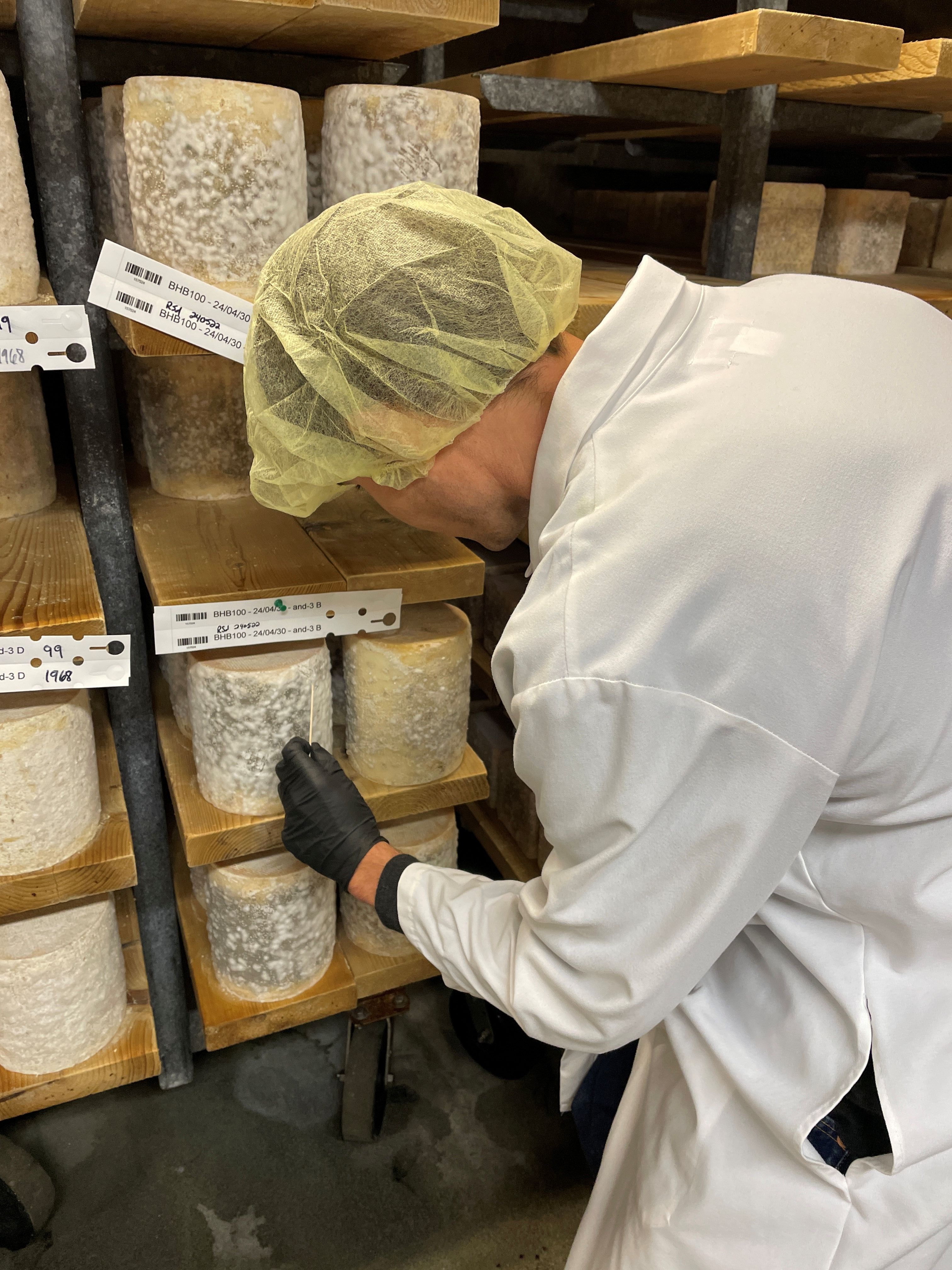What do you get when you propose to someone at a cheesemaking facility? Hopefully a yes, if they’re not too put off by the smell – but as a new study has shown, you might also end up with the ability to witness evolution in real time.
That’s what happened in 2016, when Tufts University associate professor of biology Benjamin Wolfe duped his former post-doc advisor, Rachel Dutton, into taking a trip to Jasper Hill Farm in Vermont. He’d said it was to collect samples of Bayley Hazen Blue cheese, but it was really so that Dutton’s boyfriend, Charlie Kalish, could propose.
It wasn’t a complete ruse though. Wolfe still got his cheese samples from the facility’s caves, and popped them in his lab’s freezer, where they would remain untouched until relatively recently. “I’m notorious for not throwing samples away just in case we might need them,” said Wolfe in a statement.
Luckily for Wolfe (if not his lab’s storage space), his reluctance worked out well. Graduate student Nicolas Louw later returned to the cheese caves at Jasper Hill to get samples of the same blue cheese. Only this time, instead of the mint green coating Wolfe had seen back in 2016, the rind was a chalky white.

Louw taking samples of the cheese. Also, why did no one tell us growing up that “cheese scientist” was a legitimate job?!
Image credit: Benjamin Wolfe
Previous research from the team had determined that the rind’s original green color was the result of the fungus Penicillium solitum. Now, they suspected that they might have inadvertently witnessed its evolution.
“This was really exciting because we thought it could be an example of evolution happening right before our eyes,” said Wolfe. “Microbes evolve. We know that from antibiotic resistance evolution, we know that from pathogen evolution, but we don’t usually see it happening at a specific place over time in a natural setting.”
It could also have been a case of a change in the rind’s species composition; another fungal species may have become dominant, with less or no P. solitum to produce the green.
To find out, Wolfe and the team examined samples of the Bayley Hazen Blue rind collected from the cheese caves in 2016, 2022, and 2024. They found that P. solitum was still dominant – and that it had experienced disruption in a gene called alb1. This was a case of evolutionary change.
The evolutionary color shift wasn’t just caused by a one-off mutation either. The researchers uncovered multiple different types of mutations in different places in the alb1 gene and genome. This included changes to a single letter in the DNA code, but the most common change they found was the insertion of transposable elements (TEs).
Also known as “jumping genes”, because they are chunks of DNA that can “jump” from one part of the genome to another, the team found that TEs had inserted in a region of the genome that negatively affected alb1’s expression (the process of taking the DNA recipe and turning it into a protein).
But how did these disruptions change the color of the fungi? Because alb1 is involved in the production of melanin, the pigment that also gives color to human skin, eyes, and hair, as well as providing protection against UV radiation – something we’ve got in common with the fungi.
“You can think of melanin as an armor that organisms make to protect themselves from UV damage. For the fungi, it creates the green color that absorbs UV light,” explained Louw. “If you are growing in a dark cave and can get by without melanin, it makes sense to get rid of it, so you don’t have to expend precious energy to make it.”
“By breaking that pathway and going from green to white, the fungi are essentially saving energy to invest in other things for survival and growth.”
Understanding how this adaptation occurred could have benefits for cheesemakers. “Seeing wild molds evolve right before our eyes over a period of a few years helps us think that that we can develop a robust domestication process, to create new genetic diversity and tap into that for cheesemaking,” said Wolfe.
But it could also play a role in better food security too. “Somewhere around 20 percent of staple crops are lost pre-harvest due to fungal rot, and an additional 20 percent are lost to fungi post-harvest,” added Louw. “That includes the moldy bread in your pantry and rotting fruit on market shelves. The biggest threat to global food security is just rot from mold.”
The study is published in the journal Current Biology.
Source Link: Cheese Caves, A Proposal, And Chance: How Scientists Ended Up Watching Fungi Evolve In Real Time